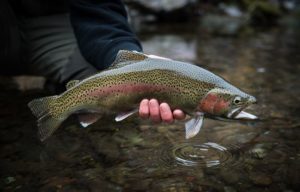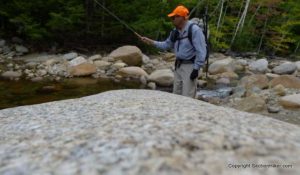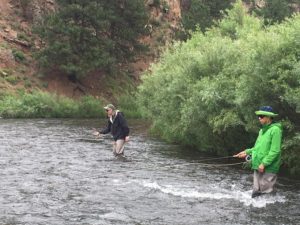 Dedicated fishermen know that there is nothing better than heading off on a big fishing trip. It is exciting to head off to new areas and see what fish are available there, but it also takes a lot of preparation; especially if you are going fly fishing in the west. The best time to plan is before you go because once you get there, you will not want to waste time searching for the right gear and other things. Are you ready to make the fly fishing trip preparations that you need to make?
Dedicated fishermen know that there is nothing better than heading off on a big fishing trip. It is exciting to head off to new areas and see what fish are available there, but it also takes a lot of preparation; especially if you are going fly fishing in the west. The best time to plan is before you go because once you get there, you will not want to waste time searching for the right gear and other things. Are you ready to make the fly fishing trip preparations that you need to make?
Plan Your Trip
 Each year, you should try to plan a trip for yourself that exposes you to new areas. These new areas may not replace your old favorite spot, but it can go a long way in helping you stay on top of your game. You can practice new fly fishing techniques and more, but it does take planning before you head off to Montana, Wyoming, Idaho, and other areas. You will need the proper clothing, proper footwear, and a variety of other things to keep you comfortable. Your most favorite fly fishing rod and reel and your different lures so that you can try out a variety of baits should be one of the first things you gather up.
Each year, you should try to plan a trip for yourself that exposes you to new areas. These new areas may not replace your old favorite spot, but it can go a long way in helping you stay on top of your game. You can practice new fly fishing techniques and more, but it does take planning before you head off to Montana, Wyoming, Idaho, and other areas. You will need the proper clothing, proper footwear, and a variety of other things to keep you comfortable. Your most favorite fly fishing rod and reel and your different lures so that you can try out a variety of baits should be one of the first things you gather up.
Keep Your Comfort a Priority
 If you are fishing in the winter, heavy clothes are best. During the summer, you will want to keep it light. You will want to wear polarized sun glasses either way because it will protect your eyes and allow you to see the areas that fish may be hiding. Prescription medications, snacks to eat, water to drink, and all other things will ensure that you are comfortable when fishing the streams out west. You will also want to do what you can to eliminate the flies that may be near the water because even though you are fly fishing, you still will not want to be bugged by them. For that, you may need to find out from locals what keeps flies away outside.
If you are fishing in the winter, heavy clothes are best. During the summer, you will want to keep it light. You will want to wear polarized sun glasses either way because it will protect your eyes and allow you to see the areas that fish may be hiding. Prescription medications, snacks to eat, water to drink, and all other things will ensure that you are comfortable when fishing the streams out west. You will also want to do what you can to eliminate the flies that may be near the water because even though you are fly fishing, you still will not want to be bugged by them. For that, you may need to find out from locals what keeps flies away outside.
Tips and Tricks for Fishing New Areas
When you approach a new fishing spot, take a little time to survey the area around you. This means mostly focusing your attention on the river. Look for areas where the water is rough since it could be a fish riffle that indicates where fish are feeding. You can also search for runs or pools that may be hiding fish. Rocks are also a good place to aim for since trout love to hide from predators within them. The same can be said for other areas that have coverage, such as a downed tree, a mostly submerged log, or bushes that are partially in the water. These areas are difficult to fish and you may lose your rig, but if you want to catch a large fish, these areas will give you the best shot at it. No matter which area you choose to aim for, your best bet is to cast upstream and let the lure drift downstream until you catch the fish you want. They will not be expecting a fly attached to a line that is no where near where you are casting your shadow and therefore your chances of success will increase drastically.